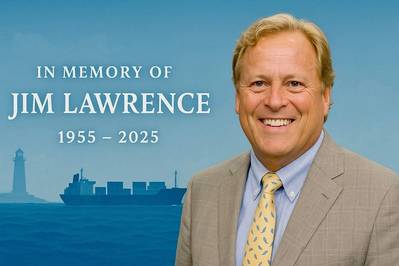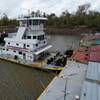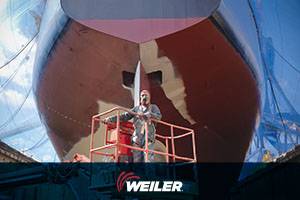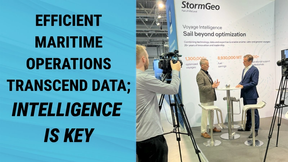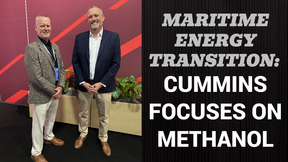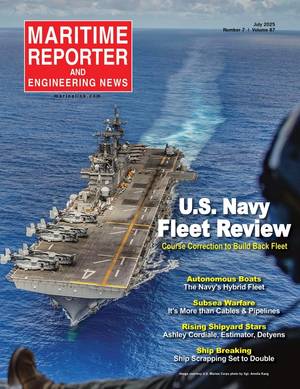Obituary: A Personal Reflection on “Shipping Legend” Jim Lawrence
“Shipping is a people business”, so the saying goes. Jim Lawrence, who passed away at the beginning of June, truly embodied that. Certainly, he was a great participant at maritime events. When not up on the podium serving as the moderator, he would be walking around, shaking hands, talking about a particular transaction or development (and, sometimes, the intrigue behind it), along with everything that goes along with networking. He will certainly be remembered as a “people person” and deservedly celebrated for that aspect. But there is much more to his story; quite simply, he was a “Shipping Legend.”
I recall that I first met Jim in 1985 at a luncheon at the Downtown Athletic Club, at that time already past its prime but still a New York maritime hangout of sorts. In the mid-1980s, new technologies were trickling in, enabling the earliest versions of remote interactions. Shipping folks had been moving out of downtown New York to suburban Connecticut, notably Greenwich and Stamford. So, around the same time, the Connecticut Maritime Association (CMA) sprung up, with a group of shipbrokers, chartering folks, and a few shipowners meeting for monthly lunches. The technology “revolution” (now very quaint with personal computers and fax machines being the big topics) lent itself to gatherings that took on the tone of exhibitions. Jim had the vision of something bigger … much bigger.
Jim had experience in organizing events, and through some Connecticut connections, quickly came to the attention of the CMA’s Board of Directors. The rest is history, with Jim leading the CMA from its monthly luncheon club to its hosting of a world-class international conference and exhibition. The vision became reality … and then some. Through his leadership, the vendor side came together with leaders on the business, legal and regulatory side of shipping. His company, International Marketing Strategies (IMS, with an office down the hall from bulk pioneer Ole Skaarup) worked in conjunction with the CMA, transformed the annual gathering into an event bringing together worldwide attendees to its Stamford venue. IMS was also involved (and continues to be) in arranging lunches and other CMA events.
There were other changes going on, which Jim could sense, really much better than industry “veterans”, and, uniquely, he was able to act upon them. His family had generations of experience in money management, so shipping finance was in his wheelhouse.
In the late 1980’s, he acquired a tiny U.K. magazine, Marine Money, and began putting together a newsletter under that umbrella. He also began hosting small gatherings of executives, mainly from the banking community serving shipping, but also from the investment side.
Finance benefitted greatly from in-person interactions, as capital from outside non-bank investors was increasingly eying the industry. Through tanker and drybulk’s wild cycles (including some big booms and few busts), high yield bonds, public shares offerings, infrastructure investment, loan buyouts, Chinese leasing and, of course private equity (PE) all joined into the fray. Marine Money, Jim’s brainchild, evolved into a conference and publishing business. Its worldwide franchise spans shipping centers in Europe, Asia, and the U.S.
Another cliché goes along the lines of “shipping only gets in the news when bad things happen.” The late 1980s, a time that public share listings of shipping companies began to emerge, also saw the Exxon Valdez oil spill that led to the Oil Pollution Act of 1990 (“OPA 90”), which, in turn, spawned international rules on maritime pollution. At this time, Jim’s vision was in evidence- recognizing that shipping needed to interact with the media. And, again, vision was complemented by action, he was a founding partner of the MTI Network, which took on a role handling the media relationships for all manner of ship owners and operators (some of whom were linked to name-brand financial investors), in both good and bad times. “Incident response” is a major part of MTI’s business. Over the past decade, Jim had become involved in the industry’s push towards sustainability, bringing visions of financial incentives to reduce emissions to the forefront.
So, yes, I go way back with Jim Lawrence, and will miss him terribly. All of the activities that he conceived, the event side of the CMA, Marine Money, and MTI Network, grew through the decades (as shipping markets went up, down, and sideways) and they continue to thrive, 30 and 40 years on. So, yes, one more cliché, “Shipping legend” clearly applies here.
,




